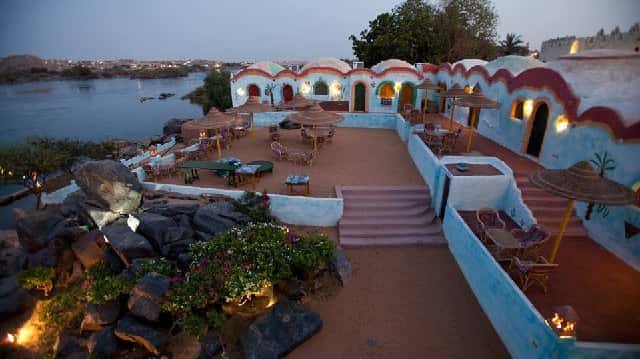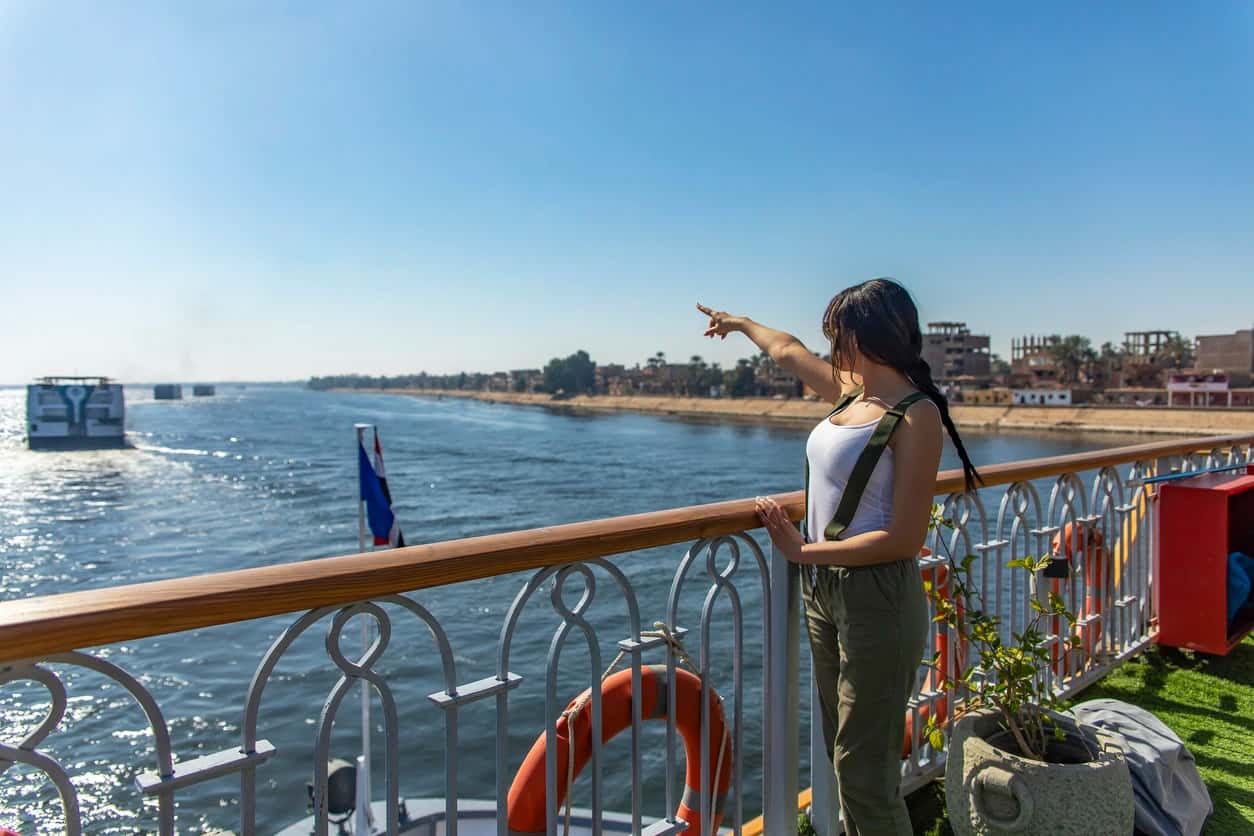
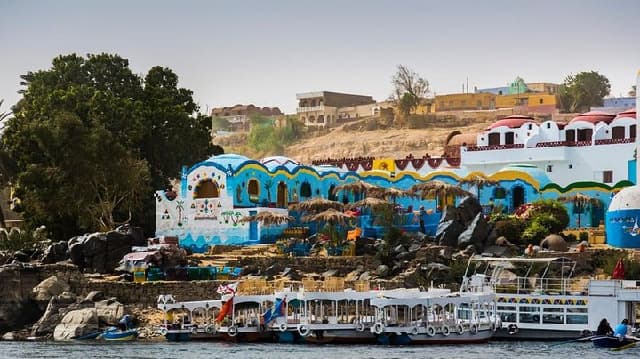
Nubia Egypt invites you to explore colorful villages, sacred symbols, and a history that helped shape the ancient world.
Nubia, once called Ta-Seti or “Land of the Bow,” was a powerful ancient civilization along the Nile, known for its skilled archers, rich trade, and vast resources. From ruling Egypt during the 25th Dynasty to connecting Africa with the Mediterranean, Nubia shaped history through art, architecture, and culture. Today, traces of its legacy live on in vibrant villages and timeless ruins, inviting travelers to explore its hidden past.
Ancient Nubia spanned southern Egypt and northern Sudan, flourishing along the Nile. Though it shared the river with Egypt, Nubia developed its own unique and influential civilization. Today, its landscapes and communities offer a window into an enduring and rich African legacy.
Nubia was divided into Lower, Middle, and Upper regions, marked by the Nile’s cataracts. Its landscape ranged from deserts to mountains, stretching from Khartoum toward Egypt, the Red Sea, and the Libyan Desert.
Aswan is the main gateway to Nubia. Visitors can reach Nubian villages via boat rides to islands like Soheil and Elephantine or cross new bridges connecting the Nile’s banks. Flights, trains, and buses make Aswan easily accessible.
The Nile was the heart of Nubia—fueling agriculture, trade, and daily life. Its fertile banks fed communities, while its waters carried gold, ivory, and incense northward, making Nubia a vital trade corridor. The river’s flow supported mining, craftsmanship, and cultural exchange, with cattle herds along its shores reflecting wealth and social standing.
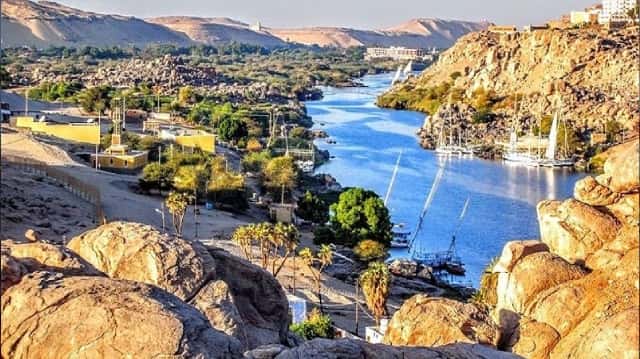
Aswan offers a lively gateway to Nubian heritage, where visitors can explore colorful markets, meet local artisans, and enjoy traditional music, dance, and food. It’s a vibrant blend of ancient roots and living culture along the Nile.
Rooted in community and heritage, the Nubian way of life blends storytelling, music, and hospitality into a vibrant cultural identity. Their traditions reflect a deep bond with the land and each other, where history lives through spoken word and every guest is treated like family.
Ancient Nubia, led by the Kingdom of Kush, made lasting contributions in architecture, art, and metallurgy. Its distinct pyramids, skilled craftsmanship, and vibrant cultural expressions reflect a civilization known for innovation, identity, and influence along the Nile.
Gharb Suhail, near Aswan, offers a vivid glimpse into Nubian culture with its colorful homes, warm hospitality, and living traditions. Visitors can join in local crafts, share meals, and explore unique architecture that blends beauty with heritage—making it a meaningful cultural stop along the Nile.
Nubian homes are vibrant reflections of culture and community, built from mud bricks for natural insulation and adorned with symbolic art that tells ancestral stories. Their colorful designs, open courtyards, and functional beauty showcase a way of life rooted in tradition, creativity, and hospitality.
Nubian clothing blends tradition, identity, and elegance. Women wear layered garments like the gemis, gurubaba, and tob, while men don the white galabeya with a tarbush. Bright colors, natural motifs, and symbolic patterns reflect Nubia’s heritage, with each piece playing a role in daily life and cultural ceremonies.
Though Nubian languages have faded with displacement, elders strive to preserve them amid modern influences. Music, especially the Tambour drum, keeps cultural memory alive, while legendary Nubian hospitality reflects enduring values of unity, resilience, and deep-rooted tradition.
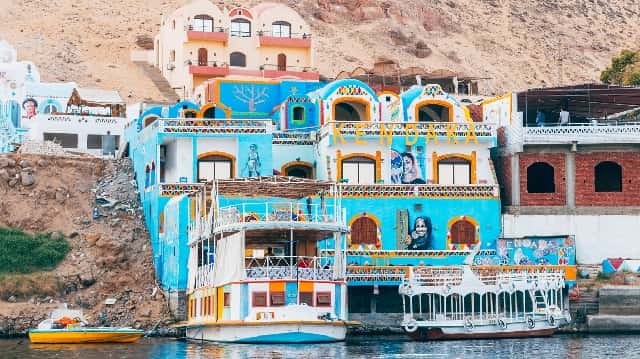
Nubia’s history is a rich tapestry of powerful kingdoms, vibrant trade, and deep cultural exchange. Home to the Kingdom of Kush, it rivaled ancient Egypt and even ruled it during the 25th Dynasty, a period of political brilliance and artistic revival.
Following Egypt’s decline around 1070 BCE, Kush rose from Napata, led by kings like Alara, Kashta, and Piye, who unified lands and extended influence deep into Egypt. Under Taharqa, the empire reached its peak, showcasing Nubian political and military strength.
Driven southward, the Kushite capital moved to Meroe, where iron production and strong leadership—especially by queens called Kandakes—created a thriving state. But environmental decline and Aksumite invasion led to its fall by 330 CE.
Linked by the Nile, Egypt and Nubia shared trade, culture, and occasional conflict. Egypt sought Nubian gold and goods, while Nubian art and royal alliances influenced Egyptian tradition. When Kushite rulers marched north, they reversed centuries of Egyptian dominance—until the Assyrians pushed them back.
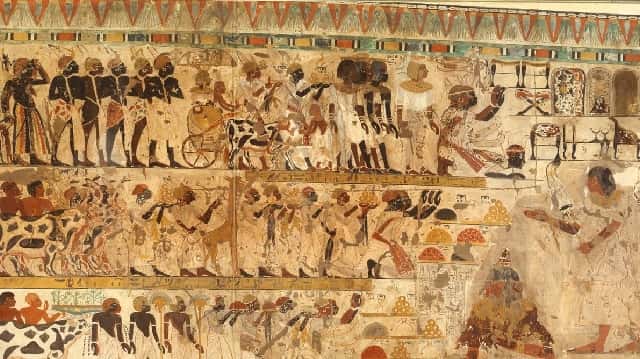
In Nubia, heritage isn’t confined to museums—it lives in sacred sites, daily rituals, and traditions passed through generations. Visitors encounter a vibrant blend of ancient symbols and modern customs that bring the region’s rich history to life.
The Aswan Nubian Museum is a world-class showcase of Nubia’s rich history and living culture. Opened in 1997 through a UNESCO initiative, it features artifacts spanning from prehistory to the Islamic era—highlighting Nubia’s unique contributions to African and world heritage.
Award-winning in design, the museum also hosts contemporary exhibitions and cultural events, bridging the ancient past with modern Nubian identity. Open daily, it offers a powerful and engaging experience for anyone exploring the legacy of this remarkable civilization.
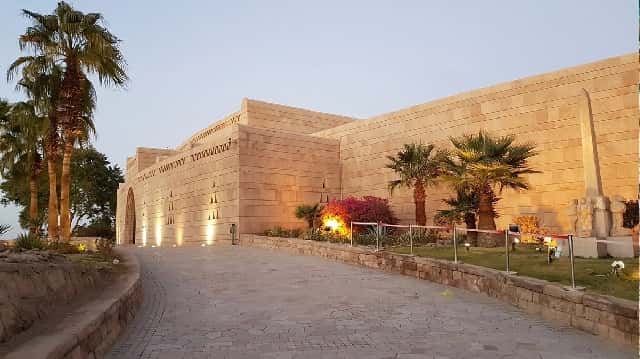
Camel rides along the Nile offer a serene glimpse into Nubia's past, followed by henna art sessions where each design reflects deep cultural symbolism and ancestral roots.
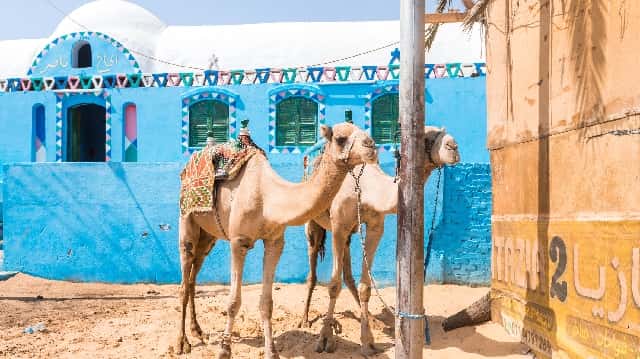
Bustling markets invite exploration with their colorful textiles, handcrafted jewelry, and aromatic spices. Here, artisans preserve centuries-old techniques, and each item—woven, carved, or blended—carries echoes of Nubia’s cultural soul and desert trade routes.
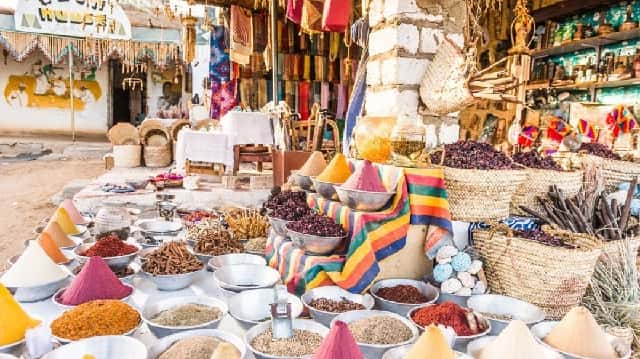
Crocodile symbols on Nubian homes reflect protection and spirituality, echoing the region’s deep connection to the Nile, ancient rituals, and enduring heritage.

Egypt and Nubia influenced each other deeply through centuries of trade, conquest, and cultural exchange. Nubian rulers revived Egyptian traditions, while Egyptian religion and art shaped Nubian identity—creating a shared legacy that blended both worlds.
Today, preserving Nubian culture is key to protecting its unique identity. Through education, festivals, and language programs, communities keep traditions alive—ensuring Nubia’s story continues to inspire future generations.
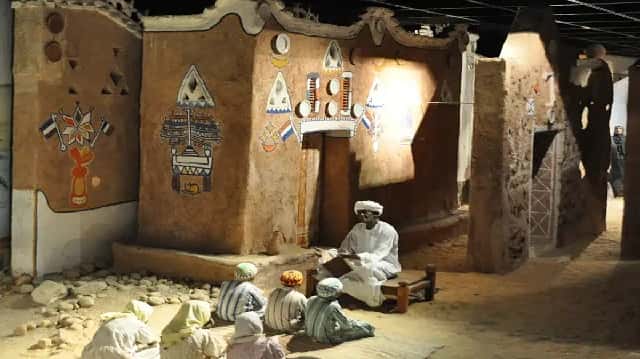
Nubia’s legacy lives on through its vibrant traditions, rich history, and resilient people. From ancient kingdoms to modern villages, Nubian culture continues to inspire with its art, architecture, and deep connection to the Nile. Preserving this heritage ensures its timeless story
Colorful homes, symbolic art, traditional music, and strong hospitality define Nubian life and reflect a deep sense of community and heritage.
Through trade, cultural exchange, and conquest—most notably during the 25th Dynasty when Nubian kings ruled Egypt.
Camel rides, henna art, local crafts, symbolic home designs, and rich history at the Nubian Museum in Aswan.
Though Arabic is more common today, Nubian traditions survive through music, festivals, and efforts by cultural institutions.
Nubia spans the southern part of Egypt and northern Sudan, along the Nile River between Aswan and Khartoum.
Nubia is known for its rich history, colorful villages, ancient pyramids, and as the homeland of the Kingdom of Kush, which once ruled Egypt as the 25th Dynasty.
Nubia was a neighboring civilization with close ties to ancient Egypt. While it was sometimes under Egyptian control, Nubia had its own powerful kingdoms, including the Kingdom of Kush.
Top attractions include the Nubian villages near Aswan (like Gharb Suhail), the Nubian Museum, the ruins of Abu Simbel, and the pyramids of Meroë in Sudan.
You can reach Nubian villages by boat, especially Soheil Island and Elephantine Island. Some villages are also accessible via new bridges or guided tours from Aswan.
Nubian culture is known for its hospitality, colorful homes, traditional music, henna art, and strong oral storytelling traditions passed down through generations.
Many Nubians speak Arabic, but older generations also preserve the Nubian language, a distinct linguistic heritage that predates Arabic influence.
Located in Aswan, the Nubian Museum showcases Nubia’s history, culture, and contributions, with artifacts from ancient to modern times.
Nubian homes are built from mud bricks, painted in bright colors, and decorated with symbolic motifs representing protection, nature, and identity.
Nubia played a central role in African and Middle Eastern history as a center of trade, a military power, and a cultural link between civilizations for thousands of years.
Nubia was crucial to ancient Egypt as a source of valuable resources, a trade route, and a cultural exchange partner
Explore the magic of Nubia Egypt with exclusive luxury Egypt tours—rich history, refined comfort, and unforgettable memories.
